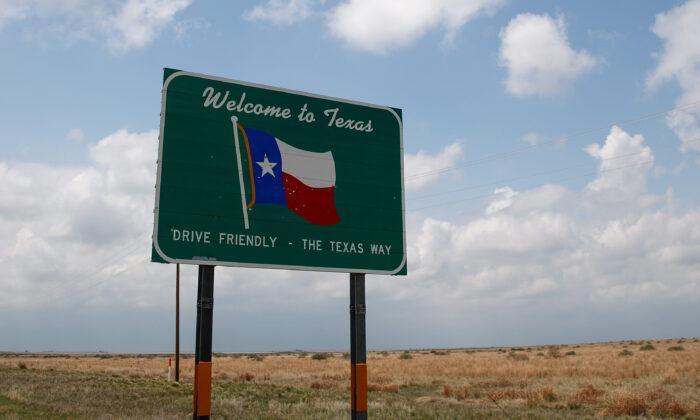California, there they go.
Ohanian is a Hoover research fellow and professor of economics at UCLA, and Vranich has been one of my sources for 20 years. His Spectrum Location Solutions used to be in Irvine, California. Now, it’s in McKinney, Texas, near Dallas.
Just like so many former California-based firms and residents.
The report’s shocking news: For the first six months of 2021, the exodus of company headquarters from California has doubled from the same period in 2018. And in the first half of this year, 74 skedaddled, more than all last year.
The reasons: “High tax rates, punitive regulations, high labor costs, high utility and energy costs, and declining quality of life for many Californians which reflects the cost of living and housing affordability.”
However, the authors caution the 2020 numbers were affected by COVID-19, which slowed planning and scouting for new locations.
Here are the main destinations for company HQs from 2018 to 2021 (and the number of companies that relocated): Texas (114), Tennessee (25), Arizona (17), Nevada (15), Colorado (14), Florida (13), North Carolina (8 Georgia (5), Idaho (4), Kentucky (4), Virginia (4), Indiana (4), Alabama (3), Missouri (3), Minnesota (3), and Oregon (3).
The study notes of this and other data: “Additional companies have relocated their headquarters to other states, but the only states listed above are those where such events are public knowledge. The states listed have likely experienced more wins.”
No Awareness
I asked Vranich if there’s any awareness of this exodus among Gov. Gavin Newsom and the state’s other top political leaders. “No,” he replied. He said the state isn’t even thinking about cutting taxes, despite what Newsom claims is a $78 billion budget surplus (but which the Legislative Analyst pegged at a still hefty $38 billion).And he pointed to this July 2021 statement by Ohio Lt. Gov. John Husted: “Fifteen years ago, we began reforming our tax plan—we eliminated the corporate franchise tax ... eliminated the death tax—we went from a high-tax state to a lower-tax state. We absolutely do see it as a time to compete. Capital will ultimately go where it can be the most appreciated.”
The Hoover report itself noted: “Ohio is gaining popularity as the place where more companies call home. Five states lowered corporate income tax rates for 2021—Arkansas, Colorado, Indiana, Iowa, and Mississippi.”
And: “Gov. Newsom’s strategy is not to reduce taxes but to increase incentives offered to companies, thus increasing taxpayer burdens…. Since the start of the Newsom Administration in January 2019, GO-Biz awarded 147 businesses a total of $593,844,974 in California Competes Tax Credits.”
I asked Vranich if there were any good signs.
Dismal Rankings
The study cited Chief Executive magazine’s ranking of state business climates, which pegged California as the worst of the 50 states and Texas the best—in each case, for the 17th year in a row.On the Tax Foundation’s 2021 State Business Tax Climate Index, California did marginally better—49th place, after New Jersey. Their analysis: “California’s poor position is unlikely to improve considering that its businesses routinely face threats of increases in income taxes, property taxes, and sales taxes along with higher county and municipal taxes and fees.”
The key to what’s left of California’s once tolerable tax climate is Proposition 13, the property tax limitation approved by voters in 1978.
Losses by County
The largest California counties have experienced the largest losses of business HQs (and the number of firms that exited): Los Angeles (54), San Francisco (47), Orange (29), Santa Clara (28), Alameda (20), San Diego (17), San Mateo (13), Sacramento (8), Contra Costa (6), San Bernardino (6), and Riverside (5).However, San Francisco’s population is 873,965 (2020 U.S. Census) compared to Los Angeles’s 3.9 million. That’s 4.5 times higher. So the per capita San Francisco HQ loss is about four times that of Los Angeles.
By contrast, Orange County’s population of 3.2 million (2020 U.S. Census) is just behind L.A.’s 3.9 million. But OC suffered only about half of L.A.’s headquarters losses.
The study especially scorches California’s addiction to litigation.
The authors charge, “Lawmakers in Sacramento continually enact laws designed to expand civil liability on business and property owners … California’s statutes and regulations are so unreasonable that companies have reported in confidence that their legal costs in California are disproportionate to the number of employees they have in the state.”
Workers Compensation Costs
California reformed workers compensation laws in 2003 under Gov. Arnold Schwarzenegger. It worked for a while. But a friend of mine in the industry said since then the reforms have been undercut by laws, court rulings, and new legal maneuvers devised by plaintiff attorneys.Shocking Energy Costs
Business energy costs also are excessive. All that “green energy” doesn’t come cheap.According to electricity prices paid in March 2021, based on cents per kilowatt-hour, the worst are Hawaii ($30.76), Alaska ($18.89), California ($17.20), Connecticut ($16.98), and Massachusetts ($16.81). The best are Oklahoma ($6.36), Nevada ($7.15), Idaho ($7.76), Virginia ($7.77), and Utah ($8.01).
It’s going to get worse for California: “Customers in all parts of California are likely to see energy cost increases by virtually every utility. PG&E Corp. submitted a proposal to regulators for a rate increase totaling $3.6 billion starting in 2023 to help make its system more reliable and safer by sparking fewer fires.
Major Firms Leaving
The report identified large and medium firms whose relocation can be found in news accounts. But many small firms just up and leave with no notice.At the end, the report lists all the corporate bases that have left, from Jan. 1, 2018, to June 30, 2021. Some of those include Charles Schwab, to Westlake, Texas, from San Francisco; DailyWire (Ben Shapiro’s website), to Nashville, Tennessee, from Los Angeles; Dole Food Co., to Charlotte, North Carolina, from Los Angeles; Hewlett Packard Enterprise, to Houston from Santa Clara; Joe Rogan Experience, to Austin, Texas, from Los Angeles; Kaiser Aluminum, to Franklin, Tennessee, from Lake Forest.
Conclusion
In sum, it’s a dismal report. The state budget currently is buoyed by the bounty from Silicon Valley, whose revenues just keep growing and growing.But for just about any other firm in California, the times are tough and getting tougher. And when the going gets too tough, even the tough get out.





